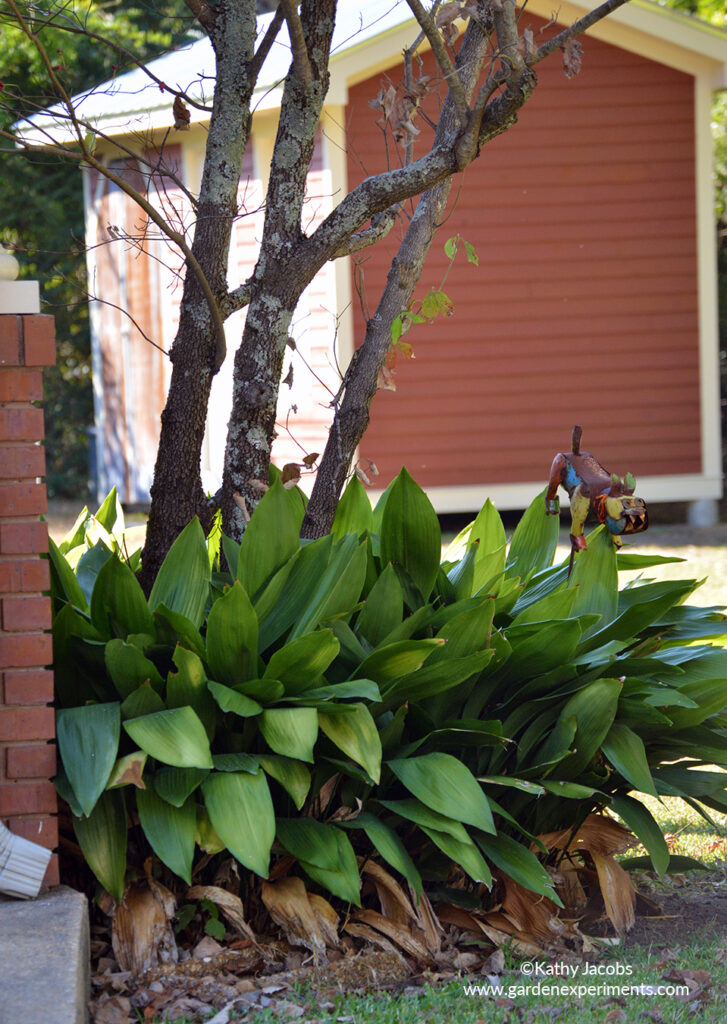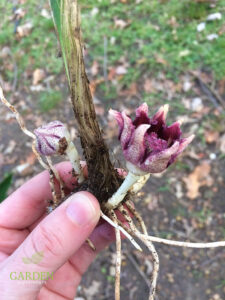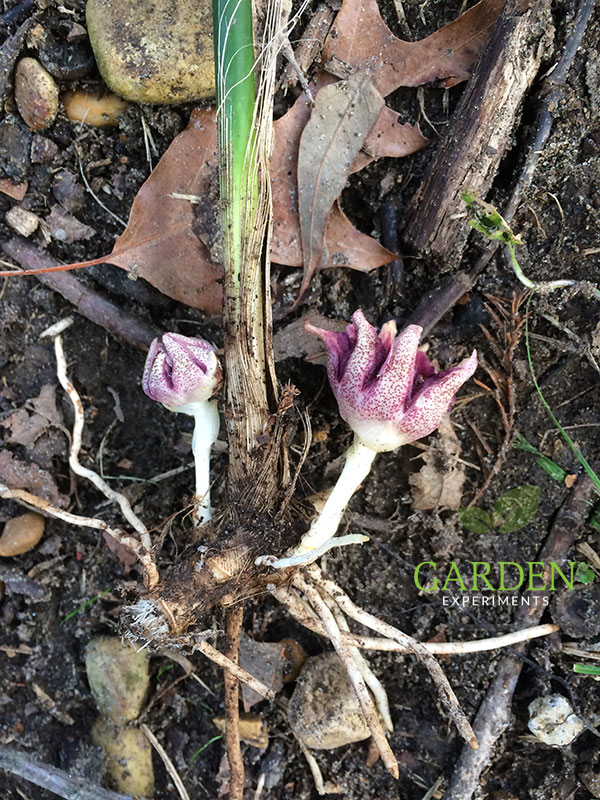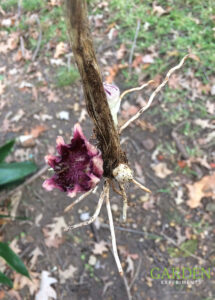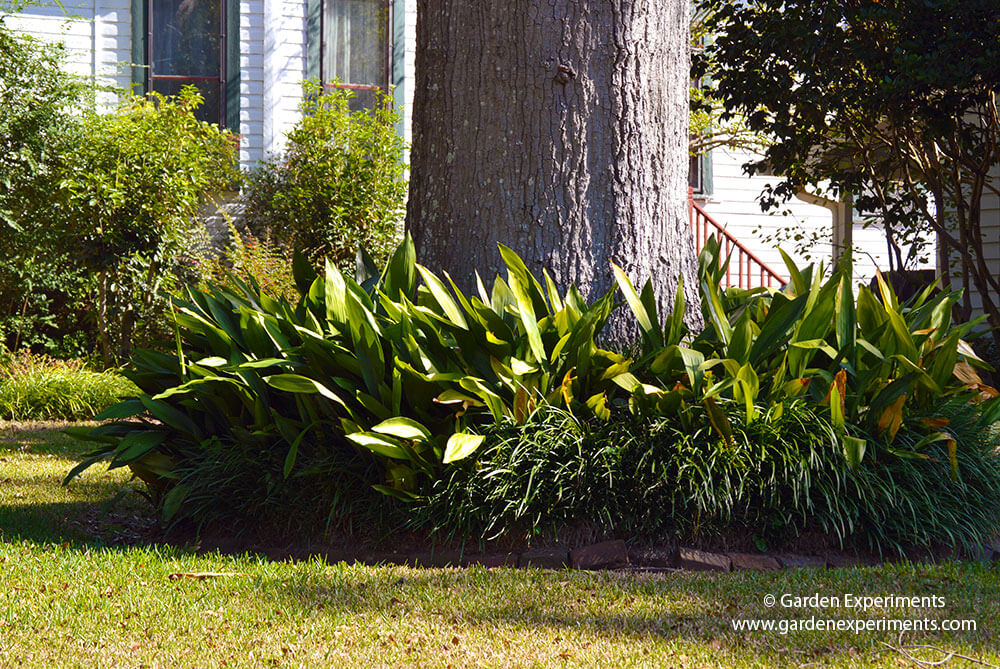
As I was working to remove some hellebores, ferns, hydrangeas, and cast iron plants from my shade garden, I made an interesting discovery at the base of the cast iron plants, hidden under the leaves – a cluster of cast iron plant flowers!
When I dug up the base of the cast iron plant and saw the flower, my first thought was, ‘It’s the plant from The Little Shop of Horrors!’ You know, the alien creature that insists on being fed fresh blood? Well, this organism looked like it had sharp zig-zagged teeth and was made of plastic or foam.
The unusual growths that I uncovered from the leaves were flowers of the cast iron plant (Aspidistra elatior). They are quite unusual.
Cast Iron Plant Flower Description
Cast iron plant flowers are 3-inches tall fleshy, maroon-speckled, mushroom-shaped objects with a zig-zag or serrated edge. I know. Weird description, right? But that’s the best way I know how to describe them.
Since my discovery, I have shared my photos with several people only to discover that these flowers are a rare sighting. One researcher who studied cast iron plants, several people who were in the plant nursery industry for several decades, and two horticulturalists that I spoke with have never seen these flowers.
Pollination for the Cast Iron Plant
The shape, color, and location of a flower is related to the pollinator that it is trying to attract. Often, these two things evolve with one another. Scientists have been debating over what pollinates the cast iron plant flowers for a long time.
In the 1800’s some scientists proposed that slugs pollinated these flowers, while others disagreed and said that springtails (small wingless hexapods in the soil) pollinated them. Recent research (2017) on Japan’s Kuroshima Island showed fungus gnats to be the best pollinators (New Scientist, November 29, 2017; Science Daily, November 15, 2017).
It amazes me that after gardening for most of my life, my garden and its plants, insects, and wildlife can still surprise and amaze me.
